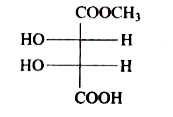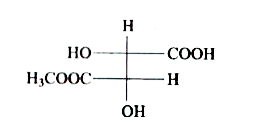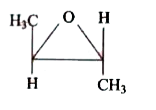Which of the following pairs of molecules have the almost identical bond dissociation energy?
F2andH2
N2andCO
F2andI2
HFandO2
The correct Answer is:C
To determine which pairs of molecules have almost identical bond dissociation energy, we need to understand the concept of bond dissociation energy and the factors that influence it.
1. Understanding Bond Dissociation Energy:
- Bond dissociation energy is the amount of energy required to break a bond in a molecule. Stronger bonds require more energy to break, resulting in higher bond dissociation energy.
2. Identifying the Factors:
- The bond strength is influenced by several factors including atomic size, bond length, and the presence of lone pairs. As atomic size increases, bond length increases, which typically leads to a decrease in bond strength and bond dissociation energy.
3. Analyzing the Given Molecules:
- We need to compare the bond dissociation energies of the pairs of molecules provided in the options. In this case, we focus on the pair of fluorine (F2) and iodine (I2).
4. Comparing Fluorine and Iodine:
- Fluorine (F2) has a small atomic size and three lone pairs of electrons on each atom. These lone pairs repel each other, weakening the bond between the two fluorine atoms despite the small size.
- Iodine (I2), on the other hand, has a larger atomic size and longer bond length, which also results in a weaker bond.
5. Conclusion:
- Due to the unique properties of fluorine and the larger size of iodine, both have low bond dissociation energies that are almost identical. Therefore, the pair of molecules with almost identical bond dissociation energy is fluorine (F2) and iodine (I2).
Final Answer:
The pair of molecules that have almost identical bond dissociation energy is Fluorine (F2) and Iodine (I2).
---
- Bond dissociation energy is the amount of energy required to break a bond in a molecule. Stronger bonds require more energy to break, resulting in higher bond dissociation energy.
- The bond strength is influenced by several factors including atomic size, bond length, and the presence of lone pairs. As atomic size increases, bond length increases, which typically leads to a decrease in bond strength and bond dissociation energy.
- We need to compare the bond dissociation energies of the pairs of molecules provided in the options. In this case, we focus on the pair of fluorine (F2) and iodine (I2).
- Fluorine (F2) has a small atomic size and three lone pairs of electrons on each atom. These lone pairs repel each other, weakening the bond between the two fluorine atoms despite the small size.
- Iodine (I2), on the other hand, has a larger atomic size and longer bond length, which also results in a weaker bond.
- Due to the unique properties of fluorine and the larger size of iodine, both have low bond dissociation energies that are almost identical. Therefore, the pair of molecules with almost identical bond dissociation energy is fluorine (F2) and iodine (I2).
The pair of molecules that have almost identical bond dissociation energy is Fluorine (F2) and Iodine (I2).
Topper's Solved these Questions
- PERIODIC PROPERTIESBOOK - VK JAISWAL ENGLISHCHAPTER - PERIODIC PROPERTIESEXERCISE - Level 3 (Passage Type)
89 Videos
- PERIODIC PROPERTIESBOOK - VK JAISWAL ENGLISHCHAPTER - PERIODIC PROPERTIESEXERCISE - ONE OR MORE ANSWERS IN/ARE CORRECT
98 Videos
- p-BLOCK ELEMENTSBOOK - VK JAISWAL ENGLISHCHAPTER - p-BLOCK ELEMENTSEXERCISE - SUBJECTIVE PROBLEMS
35 Videos
- QUALITATIVE INORGANIC ANALYSISBOOK - VK JAISWAL ENGLISHCHAPTER - QUALITATIVE INORGANIC ANALYSISEXERCISE - SUBJECTIVE PROBLEMS
4 Videos
Similar Questions
Knowledge Check
Which of the following are identical molecules?
Aa) Bb)
Bb) Cc)
Cc) Dd)
Dd)
Which of the following are identical molecules?
A B
B C
C D
D
Which one of the following pairs of species have the same bond order?
ACO,NOBO2,NO+CCN−,CODN2,O−2
Which among the following pairs of molecules have zero dipole moment ? .
View SolutionWhich of the following pair of species have identical shape?
View SolutionWhich of the following pair of molecules will have permanent dipole moment?
View SolutionWhich of the following pair of functions are identical
View SolutionCorrect order of bond dissociation energy
View Solution
